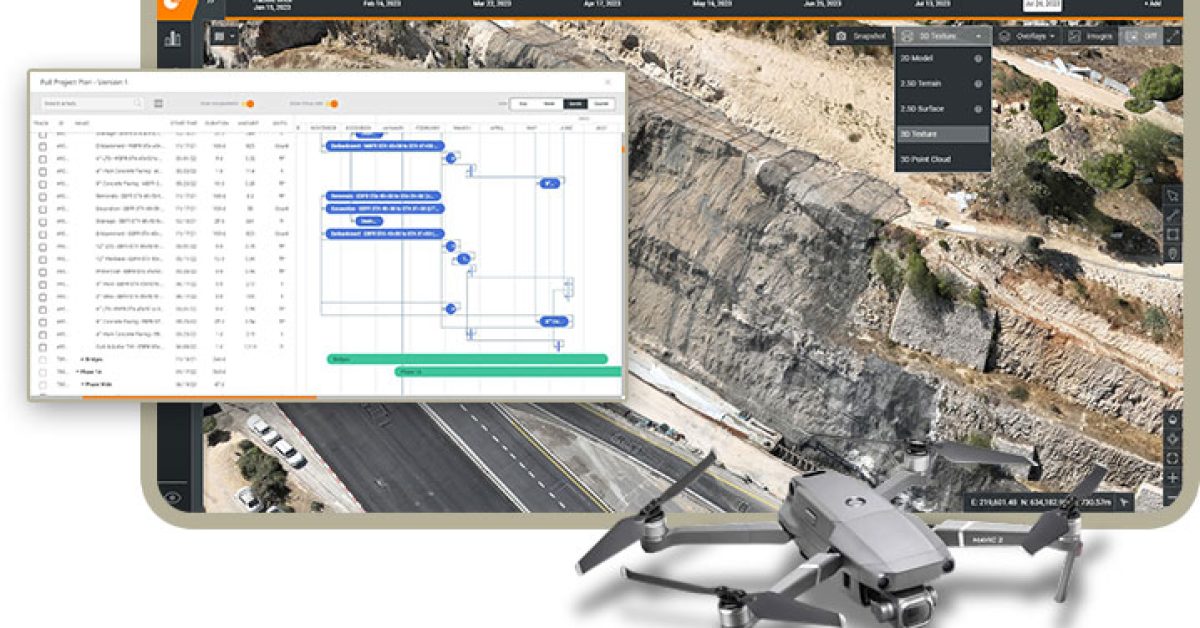PPK and RTK in a nutshell
Post-processed Kinematic (PPK) and Real-time Kinematic (RTK)RTK is a technology to correct drone location data in real-time. It needs a fixed base station with an uninterrupted con... More are GPS correction technologies that can complement Ground Control Points (GCPs) when mapping out a new project. As laying GCPs can often take days’ worth of time, and can be difficult when a site includes uneven ground, RTK and PPK can simplify the workflow, reduce the reliance on GCPs, and add accuracy and insight to a project as a whole.
Looking to understand the differences between competing GPS correction technologies? This article describes the advantages and disadvantages of both RTK and PPK for drone flights, and when each technology will be the right fit for your business needs.
What is PPK and RTK?
Drone applications have changed the game in industries like surveying, mapping and agriculture. To achieve the high-precision necessary for centimeter-level accuracy, techniques such as Post-processed Kinematic (PPK) and Real-time Kinematic (RTK)RTK is a technology to correct drone location data in real-time. It needs a fixed base station with an uninterrupted con... More use GNSS data from the network or the base station to correct the position of the drone. This kind of GPS correction technology has been shown to improve data gathering by 75%.
The main difference between the two solutions is that PPK corrects the data in the cloud after the drone flight has taken place, while RTK provides real-time corrections to the location data in the moment.
The pros and cons of PPK
PPK is a reliable technology. It processes the GNSS data once the flight is complete, without the need for a real-time data link. As it doesn’t need a continuous connection to the base station, it’s a great choice for flying in areas where connectivity or coverage may be limited, for example in crowded cities.
For projects that require a high level of accuracy, PPK is a common choice. It can account for any temporary data gaps or errors, and is therefore particularly robust against data loss. Any temporary data loss that does occur during the flight won’t make a difference to the ultimate accuracy. That makes it popular for flights with a longer duration, too.
However, when you opt for PPK, you’re adding complexity to the workflow, and lengthening the time it takes to get accurate information. Because it’s processed after the flight, it can add an extra step to processing drone data. You’re likely to need to onboard specialized software to process PPK data, which can also add overhead. If your project has a tight deadline, or you’re relying on receiving real-time feedback, PPK may not be the right choice.
The pros and cons of RTK
RTK also has its advantages and disadvantages. Many companies opt for RTK because of its real-time corrections. During the drone’s flight, RTK allows users to see accurate positioning data immediately, offering the ability to make real-time changes. Think about industries such as construction site monitoring or precision agriculture where this can have an immediate impact on your bottom line. By enabling stakeholders to make quick decisions on the fly, productivity and efficiency is greatly enhanced.
RTK has become increasingly popular, leading to an increased availability of RTK-capable drones and receivers, and of course, there’s no need for post-processing of the GNSS data after the flight, making RTK a great option when a project is down to the wire.
Where do CORS networks come into the picture?
The conversation around PPK vs RTK wouldn’t be complete without discussing CORS networks. There are currently 30 states offering a free CORS/VRS network. These are Continuously Operating Reference Station (CORS) networks and provide high-precision GNSS data via a network of RTK base stations that broadcast corrections. For example, SmartNet provides high-precision GNSS corrections from base stations that cover a significant portion of the US, allowing drone users to access RTK corrections without the need for their own dedicated base station. Companies like these offer an excellent service, but it can tend to be costly.
As one of the traditional disadvantages of using RTK was the need to deploy a base station, even in areas where it was impractical — CORS networks are a critical consideration to research when choosing between RTK and PPK.
Both RTK and PPK can utilize data from both commercial and public CORS networks, but with RTK, these can be accessed in real-time during the flight, offering accurate positioning data in the moment for a wide number of locations. Note that if surveyors are already using RTK in the field, existing drones can usually be connected to the same RTK network without the need to purchase additional network connection services.
Choosing between PPK and RTK
If it’s make your mind up time — the truth is that while both RTK and PPK will be the right choice for different use cases, RTK is a faster and simpler solution, and will therefore fit the bill in most cases. It’s also the same technology that the surveyors in the field use for their rovers and base stations, making it seamless to utilize as part of your drone program
Other benefits of RTK that put it a cut above, are its access to real-time data. When access to real-time information is a critical checkbox item for your project, enabling data-driven decision making and efficiency in the moment, RTK is a great choice, especially if you can lean on CORS networks in your region.
This doesn’t mean there is never a place for PPK. RTK relies on a continuous data link between the base station and the network, so it can risk data loss in very challenging topography terrain, where you can’t be sure obstacles won’t block or disturb the signal. To ensure reliable data collection and robust correction accuracy, especially in crowded areas or those with low coverage, or for a long duration flight — PPK is the perfect option.



